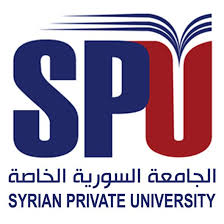Subscribe to the gold package and get unlimited access to Shamra Academy
Register a new userRelativistic Quantum Cryptography
315
0
0.0
(
0
)
Added by
Konstantin Kravtsov
Publication date
2014
fields
Physics
and research's language is
English
Ask ChatGPT about the research

No Arabic abstract
Quantum key distribution (QKD) is a concept of secret key exchange supported by fundamentals of quantum physics. Its perfect realization offers unconditional key security, however, known practical schemes are potentially vulnerable if the quantum channel loss exceeds a certain realization-specific bound. This discrepancy is caused by the fact that any practical photon source has a non-zero probability of emitting two or more photons at a time, while theory needs exactly one. We report an essentially different QKD scheme based on both quantum physics and theory of relativity. It works flawlessly with practical photon sources at arbitrary large channel loss. Our scheme is naturally tailored for free-space optical channels, and may be used in ground-to-satellite communications, where losses are prohibitively large and unpredictable for conventional QKD.
rate research
Read More
This is a chapter on quantum cryptography for the book A Multidisciplinary Introduction to Information Security to be published by CRC Press in 2011/2012. The chapter aims to introduce the topic to undergraduate-level and continuing-education students specializing in information and communication technology.
Quantum cryptography is a new method for secret communications offering the ultimate security assurance of the inviolability of a Law of Nature. In this paper we shall describe the theory of quantum cryptography, its potential relevance and the development of a prototype system at Los Alamos, which utilises the phenomenon of single-photon interference to perform quantum cryptography over an optical fiber communications link.
The phenomenon of quantum erasure has long intrigued physicists, but has surprisingly found limited practical application. Here, we propose an erasure-based protocol for quantum key distribution (QKD) that promises inherent security against detector attacks.
Quantum cryptography is arguably the fastest growing area in quantum information science. Novel theoretical protocols are designed on a regular basis, security proofs are constantly improving, and experiments are gradually moving from proof-of-principle lab demonstrations to in-field implementations and technological prototypes. In this review, we provide both a general introduction and a state of the art description of the recent advances in the field, both theoretically and experimentally. We start by reviewing protocols of quantum key distribution based on discrete variable systems. Next we consider aspects of device independence, satellite challenges, and high rate protocols based on continuous variable systems. We will then discuss the ultimate limits of point-to-point private communications and how quantum repeaters and networks may overcome these restrictions. Finally, we will discuss some aspects of quantum cryptography beyond standard quantum key distribution, including quantum data locking and quantum digital signatures.
We propose a quantum transmission based on bi-photons which are doubly-entangled both in polarisation and phase. This scheme finds a natural application in quantum cryptography, where we show that an eventual eavesdropper is bound to introduce a larger error on the quantum communication than for a single entangled bi-photon communication, when steeling the same information.
Log in to be able to interact and post comments
comments
Fetching comments


Sign in to be able to follow your search criteria


